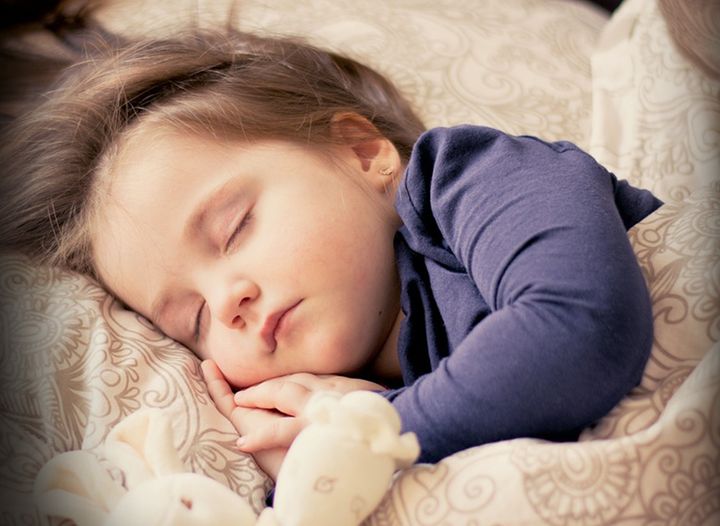
What do the words “sleep apnea” conjure in your mind?
A Google Image search of the term results in a stream of comical stock photos depicting one scene over and over again: a middle-aged man, eyes closed and jaw agape, lying supine in bed next to his clearly and supremely annoyed spouse, clutching a pillow wrapped tightly around her ears, presumably to block out her sleeping husband’s snores.
This scene surely depicts a sleep apnea stereotype. However, as more research is constantly surfacing on the condition, it’s becoming increasingly clear that sleep apnea — also known as Obstructive Sleep Apnea or, simply, OSA — is not solely in the medical purview of middle-aged men. We are learning that sleep apnea can present itself in all ages and genders. According to the American Academy of Sleep Medicine (AASM), men are twice as likely to have sleep apnea as women, yet they are diagnosed with the condition eight times more often than women. The American Thoracic Society has found that the prevalence of sleep apnea increases in men with age, yet men aged 45-64 are more likely to be diagnosed with the condition than men who are 65 years and older. Unfortunately, it seems that symptoms that present as a result of sleep apnea in women and elderly men are sometimes overlooked, mistaken, perhaps, as evidence of other diseases more commonly associated with their particular age and gender.
Kids with Sleep Apnea: It Happens
Children comprise a population cohort that particularly suffers from this tendency to misdiagnose a seemingly more age-appropriate disease than sleep apnea. According to the AASM source, 2-3% of children are diagnosed as having sleep apnea, but that number may be much lower than the actual proportion of children with the condition.
The most common causes of pediatric OSA are a narrow palate, underdeveloped lower jaw, and enlarged tonsils and adenoids. Childhood obesity is another condition that can increase the risk of pediatric sleep apnea.
Healthcare professionals don’t always think to consider a diagnosis of sleep apnea in children, so they may mistake kids’ symptoms for other childhood medical problems. For instance, symptoms that can be present in cases of pediatric sleep apnea, including hyperactivity and daytime restlessness, can be mistaken for signs of other conditions that are more commonly anticipated in children — like ADHD. Other symptoms, like bed wetting, night-sweats, heartburn, tossing and turning at night, weight gain and temper tantrums can be considered as evidence of childhood anxiety or are simply interpreted as normal stages of growing up. However, all of these symptoms can also be signs of sleep disordered breathing like OSA.
Sleep apnea patients repeatedly stop breathing during sleep, depriving their brains of oxygen for small periods during the course of their slumber. With compromised nighttime oxygen levels, children with OSA are chronically overtired, and every parent and teacher knows what that can look like! However aggravating temper tantrums and covert naps during math class may be in the short term, the long term effects on the development of a chronically tired child and teenager can be serious. The Centers for Disease Control and Prevention (CDC) recently reported that, for high school students who don’t get enough sleep, there is an increased risk of depression and injury-related behavior.
Targeting Sleep Deprived Kids and Teens
The officials are finally waking up, so to speak, to the problem of sleep deprivation in children. The American Academy of Sleep Medicine (AASM) recently announced updated sleep guidelines for kids and teens. The new guidelines are more scientifically rigorous than those that came before them, stressing the importance of consistent and sufficient sleep for young minds and bodies. In response to a growing pressure from parenting groups to target teen sleep deprivation rates, the American Medical Association (AMA) announced recently their new official recommendations that school start times be 8:30 am or later.
Scientifically rigorous guidelines and later school start times are an excellent, high-level step towards a less sleep-deprived generation of kids and teens. However, to target this mounting problem on an individual level, evaluating children for sleep disordered breathing more regularly must also become a medical and dental priority - the consequences of overlooking pediatric sleep apnea are potentially too dire not to be prioritized.
Pediatric sleep apnea that goes undetected can have serious implications for the physical and mental development of a child. A study published this year in the American Journal of Critical Respiratory Care found an inverse relationship between the severity of pediatric OSA and neurocognitive function: the more severe OSA is in childhood, the higher the risk of significantly compromised neurocognitive development. Based on their findings, the study’s authors go on to hypothesize that moderate to severe pediatric OSA that goes untreated could adversely impact a child’s capacity to attain academic and adaptive goals, which could, in turn, compromise their ability to achieve independence.
A Way Forward: Treating Childhood OSA
This is a lot of negative talk, but don’t despair! With the proper diagnosis, the treatment of pediatric sleep apnea is typically straightforward. Enlarged tonsils or adenoids — two symptoms that are commonly associated with pediatric sleep apnea — can be removed via a routine surgery. In cases where surgery is not possible or was unsuccessful in addressing sleep apnea symptoms, Oral Appliance Therapy may be an option for adolescents whose facial bone growth is complete. For younger kids who are still growing, studies show that a device called a “rapid palatal expander” might be a viable option.
Don’t be blinded by stereotypes! Sleep apnea is a condition that can affect people of any age, irrespective of gender. If your child snores or stops breathing temporarily in their sleep, or if you are concerned by your child’s mood swings, daytime grogginess or lack of focus, have your pediatrician, family physician or dentists assess them for sleep apnea. Doing so could make all the difference for the optimal growth and health of your child.
